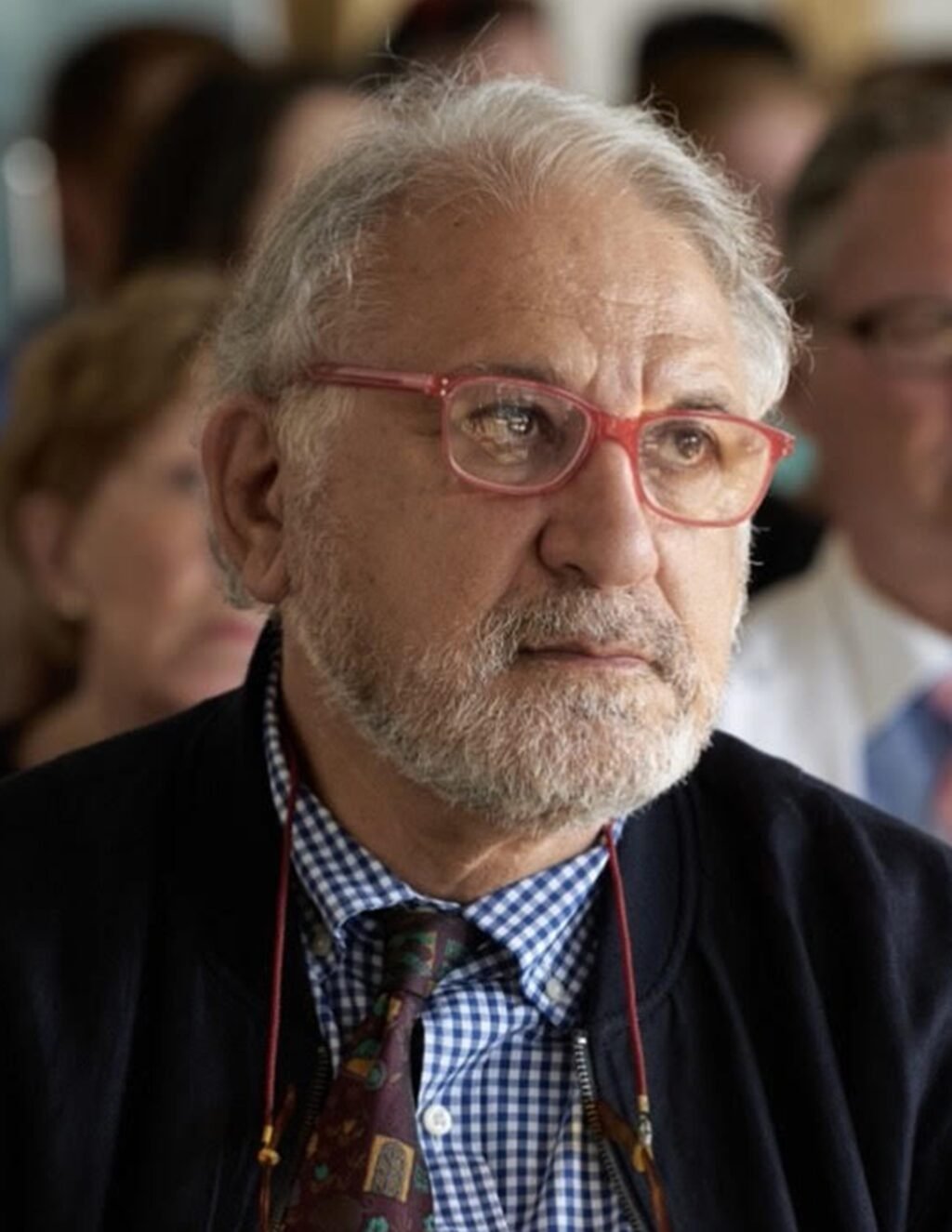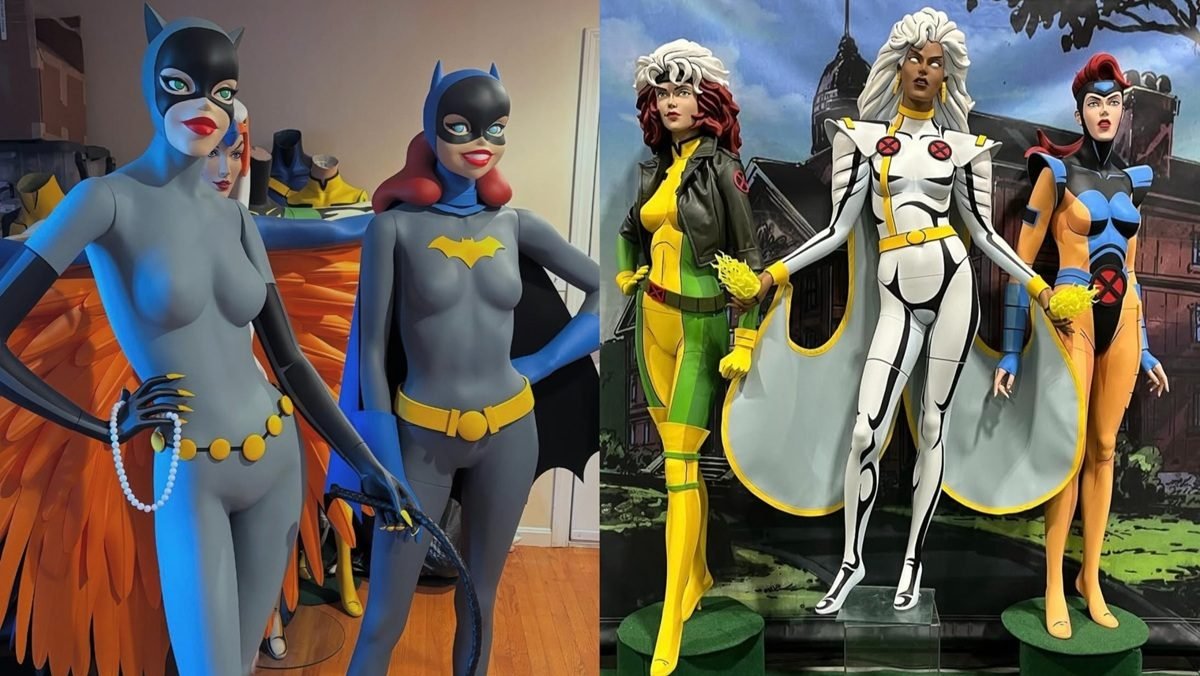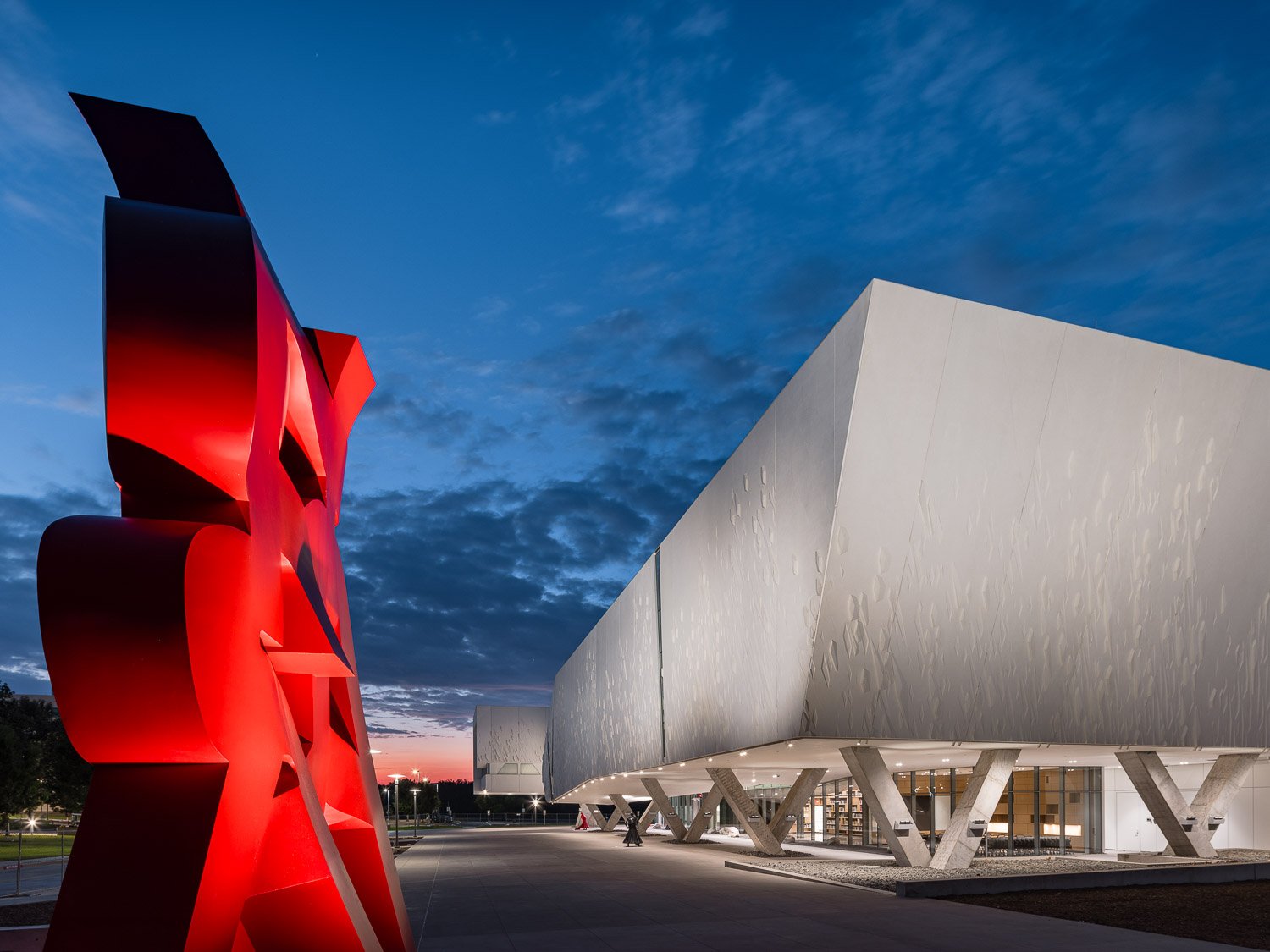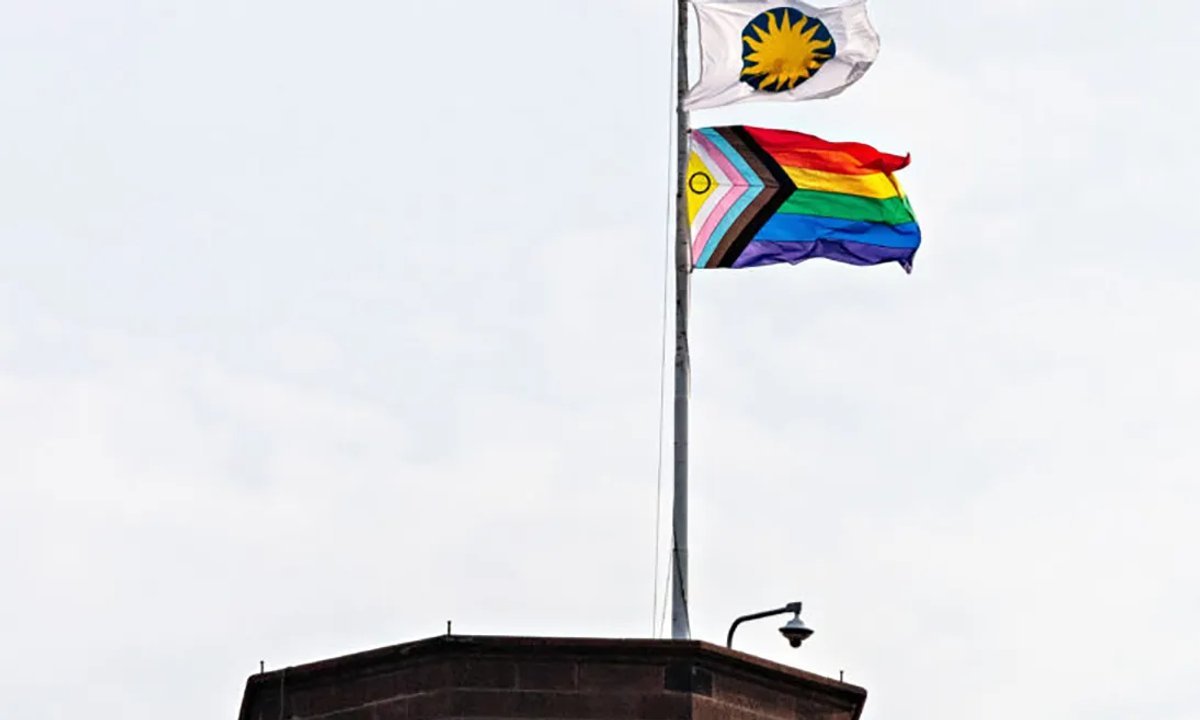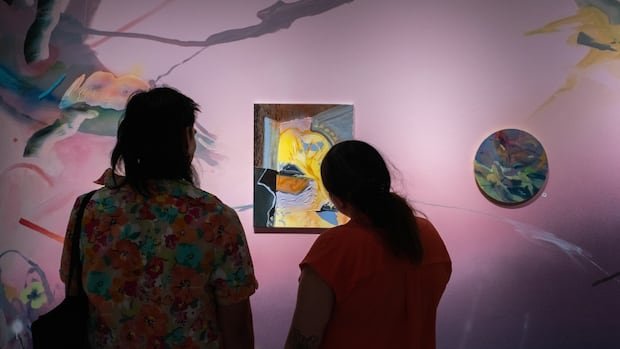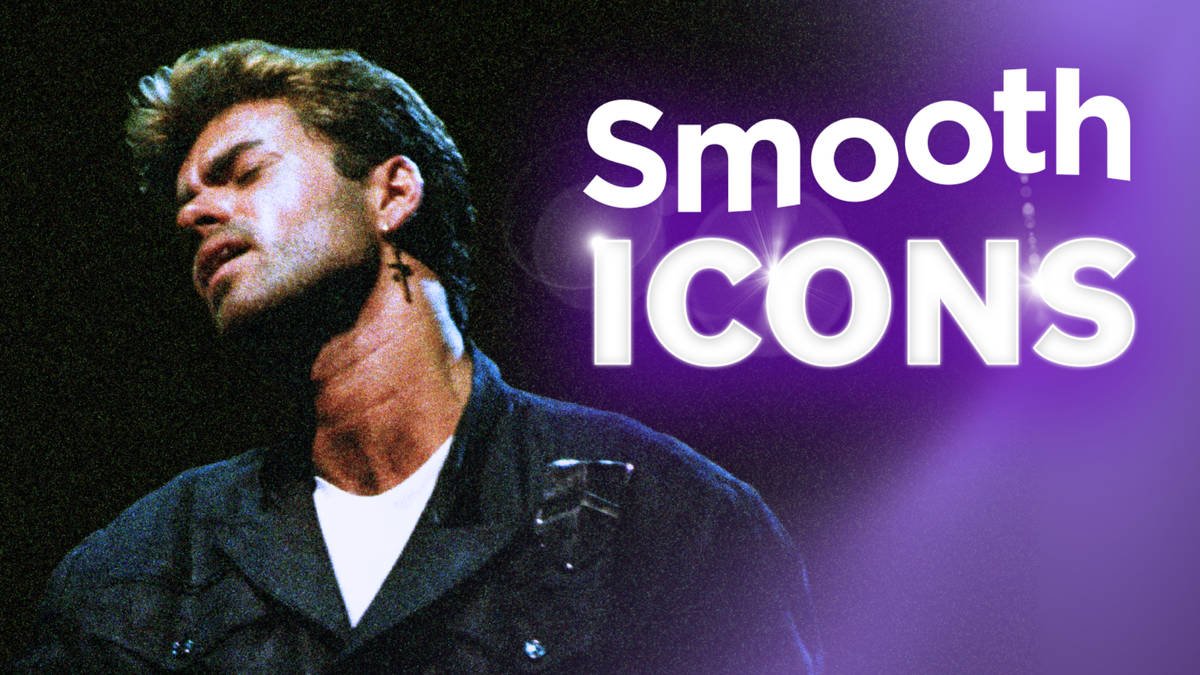This article is part of Hyperallergic’s 2024 Pride Month series, featuring interviews with art-world queer and trans elders throughout June.

Nishan Kazazian has been part of my life in some form since I arrived in New York City roughly 25 years ago. He’s a rare older gay SWANA American who has kept his connections to various communities, whether ethnic, cultural, or sexual, and embraced the sometimes frustrating realities of that lived complexity.
An artist, architect, and designer, Kazazian’s life in Beirut before the Civil War was rich. He was even taught as a child by renowned artist Paul Guiragossian, who was one of his grade school art teachers. When I asked him about that experience, he joked that all the elderly artist did was sit in the classroom and let the students do what they wanted, so Nishan did exactly that, and has done so ever since.
During those formative years, he not only created abstract art that was exhibited at prominent venues in the country, including the Sursock Museum, but he would interview older Lebanese Armenian artisans about their lives and cultural traditions pre-Armenian Genocide, teach art to incarcerated young women in Beirut, and so much more. His polyglot practice was on full display before he even left Lebanon.
In New York, where he eventually settled after Lebanon, Kazazian’s practice turned to be more research-based, and his paper architecture, though one day I hope some of these will be built, has flourished to incorporate his reflection on migration, diaspora, trauma, violence, and dialogue. As an artist, he is interested in layering and complexity, creating objects that shy away from focal points, preferring to linger on the ways forms and planes fit together, even if awkwardly, an apt metaphor for displacement and finding home.
Among his achievements, Nishan has built a home in New York with his partner, Jack Drescher, a prominent psychoanalyst known for his work on sexual orientation and gender identity. I’ve had the good fortune of being in his orbit, learning from him about the layers of identity that we often wrestle with and the impacts those can have on our lives, relationships, and work. I wanted to honor Nishan’s contributions to my life and communities with this profile, and he was kind enough to share his answers with us.
* * *
Hyperallergic: When did you come out?
Nishan Kazazian: First, I would like to thank you and Hyperallergic for thinking of me and including me. As you know, initially, I said no, but then I thought about it and decided to say yes. The reason I first said no was that I never wanted to be categorized or labeled based on my sexuality or age. However, I am aware that, now more than ever, in order to “belong” or be viewed or be taken “seriously,” one has to fit into a category. Times have changed and categorizing has become the norm.
In terms of my sexuality, I was never “in the closet,” so I did not have to “come out.” My adult sexual identity was always a kind of subtle negotiation, depending on place and time — testing the waters, considering people’s taboos and biases, and making them understand who I was. Some chose to ignore the signals; some chose to embrace them; some were in denial; and some were outraged. Incidentally, straight men have always been my best friends, particularly those who were secure in their sexuality or those who had a close family member or another good friend who was gay.
Further, in the late seventies when I had applied to stay in the US after graduate school at Columbia University, the immigration and naturalization service would reject a person’s application if they were openly out, so navigating those waters was crucial.

H: Has the art community felt open to you? Have you found it accepting?
NZ: Being born in Beirut and having lived in Europe and then most of my life in New York City, the acceptance I have experienced has varied and shifted over time and place. I do not think my sexuality has had any impact on my finding acceptance in an artistic circle, at least not that I am aware of. However, my art and architecture practices have played a role in which circles I find more acceptance. I have been told overtly by one side, “But you are an architect,” and by the architectural side, “You are more an artist,” even though I am a New York State licensed architect and most of my education was in fine arts. Some of this could be the result of multiple underlying factors.
I can think of one incident that captures this dilemma. I remember a gallery owner who admired my work, yet saying, “But why are you doing art? You make more money doing architecture. Besides, my clients will not want to buy art created by an architect.” So, identifying myself has been an ongoing process of trying not to be boxed in by others. In my life, I have always wanted to avoid that and create things outside the box.
H: Who do you consider your mentors? Did you have queer mentors when you needed them?
NZ: First, my maternal grandmother. My grandmother’s stories as a young child were profoundly influential. I remember her telling Armenian fairy tales about kings and queens, good and evil, palaces, dreams, and miracles. The Good always triumphed in the end, and every one of her stories concluded with, “and three apples fell from the sky, one for you, one for me, and one for the storyteller.”
Second, Dr. Harry Van Mierlo, who came from a prominent Dutch family that resisted the Nazis during World War II, significantly affected my life. His encounters, resistance, resilience, challenges, and courage were inspiring. He was in Beirut at Haigazian University, teaching psychology while helping Palestinian refugees and, through his international connections, also saving Jewish lives in Iraq. His philosophical approach to life and wars, as well as his book “Power and Manipulation” about world politics, profoundly shaped my understanding of how things really work.
Third, Prof. Arthur Frick, an art teacher at the American University of Beirut. Frick, my art teacher, had a fascinating journey, from service in the US Army in Japan to becoming an artist and art teacher. Beyond his approach to art — and my artworks in particular — he often expressed regret about not having become an architect. His mentorship influenced me to pursue architecture, ensuring that I would not have similar regrets.


Fourth, Prof. Bill Mahoney at Teacher’s College, Columbia University. Prof. Mahoney, whose ceramics pieces and discussions about art, ceramics, and architecture were immensely valuable, also regretted not becoming an architect. He too reinforced my decision to study architecture, to integrate art and architecture in public spaces and to avoid future regrets, no matter how successful I was in my artwork.
Fifth, Professor Klaus Herdeg at Columbia University’s GSAPP, whose research and documentation of Indian stepwells and Islamic architecture in Isfahan, Iran, encouraged me to do my thesis project on New Julfa, Isfahan. Under his mentorship, I integrated the cultural and social elements influencing Middle Eastern and Western approaches in architecture. From him I learned that ideas “travel” and diffuse into new meanings and forms.
And regarding Queer Mentors. No, I did not specifically have queer mentors that I recall. However, I did have gay friends with whom there were supportive interactions. In hindsight, perhaps I never wanted a mentor of any kind. I preferred to hear stories from people, whether gay or straight, women and men and take from their narratives what I found useful in terms of where I wanted to go.
H: How, if at all, does your identity factor into your work? How would you describe the role it plays?
NZ: I grew up in a multicultural, multi-ethnic, multi-religious, and multilingual Beirut, surrounded by an exquisite topography of mountains and sea, with layers upon layers of archaeology, as well as modern architecture and amenities. Since 1973, I have lived in NYC and, for a while, in Boston.
I also grew up in a family in an area populated by Armenian Genocide survivors, with most of my extended family scattered around the world. Witnessing Their resilience, endurance, adaptability and inventiveness taught me to never give up. In fact, one of my earliest works, while I was still in high school in Beirut, was titled “Doomsday, Diaspora and Rejuvenation.” It was exhibited in a juried show at the Salon d’Automne at the Sursock Museum in 1968 and, looking back, I believe that early work predicted the path I charted.
Since my high school years, my artwork has always reflected themes of separation and connection, belonging and not belonging, and the desire to belong. Yet, I also wanted to be different, to do things differently. This has been true since my early days in high school, through college, and ever since.
In addition, I identify as a minority within a minority on multiple levels. I am Lebanese-Armenian-American, gay. I live in New York with a prominent Jewish psychiatrist and psychoanalyst, Dr. Jack Drescher, whose international contributions on gender and sexuality have profoundly shaped contemporary understanding and acceptance. I have been inspired to embrace and integrate the diverse perspectives of all these layers into my work.
My multi-layered exposures and experiences have fostered a certain identity expressed through and in my works. Creating these works has helped me navigate the roller coaster of life, transforming life experience into art, experimental architecture, and imagined futures.

H: What’s a queer artwork that’s important to you?
NZ: I am a great admirer of the work of Keith Haring who was known for his generous contributions to public spaces. I personally witnessed him painting in subway stations, cars, and various other areas. With his bold, energetic lines and vibrant colors, he aimed to challenge societal norms and promote inclusivity. He also demonstrated a remarkable and admirable disregard for financial gain, instead focusing on enriching communal environments. His transformative art turned bleak spaces into vibrant celebrations, leaving an enduring legacy of creativity and altruism.
I also admire Frida Kahlo; Her bisexuality, her exploring themes of identity, gender, and sexuality, alongside her unwavering resilience in confronting her health challenges. All of this is evident in her determination to paint despite HER physical limitations, as she transformed her pain into powerful expressions of art.
As a licensed and practicing architect, I find Philip Johnson’s iconic Glass House to be a compelling metaphor for openness and visibility, embodying his innovative design philosophy and spatial concepts.
Another source of inspiration for me has been Sergei Parajanov, the Soviet Armenian-Georgian artist and filmmaker. His movies eloquently portray the diverse cultures of the Caucasus, encompassing Armenian, Georgian, Azerbaijani, Russian, and Ukrainian heritages. Despite facing challenges stemming from his sexuality, Parajanov’s unwavering dedication and resilience are evident in his work. Through intricate tableaux of history, archaeology, and intercultural narratives, his films weave together visual poetry that evokes deep emotional and cultural resonance.
H: What does Pride Month mean to you?
NZ: Pride Month means celebrating diversity and solidarity with disadvantaged and voiceless communities, acknowledging how far we’ve come, and recognizing the journey that still lies ahead.
H: What are you working on now?
NZ: I am currently working on several artworks in acrylic and sustainable wood veneer constructions. Additionally, my most enjoyable works are often the result of unintended outcomes, such as my recent Plexiglass and acrylic paint structure, “Transient Shadows: Unyielding and Defiant,” and a sustainable wood construction titled “Revamping Lost Horizons.”
I am also completing an innovative architectural installation called the “Alternative Zoo.” This project uses Wi-Fi, drones, and cameras to project live imagery from native habitats onto site-specific architectural forms. The Alternative Zoo aims to avoid the outdated cruelty inherent in traditional zoos by providing a humane and immersive experience.
For me, it is not about reiterating messages we are already aware of, such as “Icebergs are melting,” nor is it merely about aesthetics. It is about taking it to another level—The work is about integrating technology, imagining materiality, using AI as a tool rather than an end, and creating works that serve as catalysts to address our existential challenges.
H: Do you feel connected to upcoming queer artists and artwork?
NZ: I rarely view an artwork through the lens of it being “queer.” I prefer to evaluate A piece based on its own intrinsic qualities and my personal connection to it. If I learn that an artist identifies as queer and they explicitly state this in their work, then I make an effort to understand the context, background, and motivations behind their art. This deeper understanding helps me appreciate the unique perspectives and experiences that inform their creations, but my primary focus remains on the art itself and how it resonates with me on a personal level.

